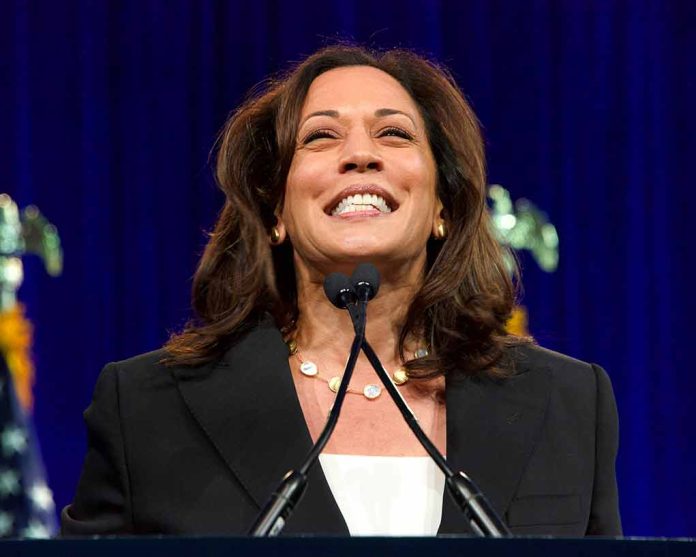
Vice President Kamala Harris’s facial expressions during a recent debate with Donald Trump have sparked widespread criticism and debate.
At a Glance
-
-
- Harris faced scrutiny for her animated facial expressions during the debate with Trump.
- Social media reactions were divided, with some questioning the authenticity of her gestures.
- Critics argued that her visual performance overshadowed policy discussions.
Criticism of Kamala Harris’s Facial Expressions
During the ABC News Presidential Debate against former President Donald Trump, Vice President Kamala Harris found herself under intense scrutiny for her animated facial expressions. Critics pointed out her eye rolls, furrowing brows, and exaggerated smiles as evidence of insincerity and theatrical performance. The reactions were noted not just by the public but also by media commentators.
Social media platforms were ablaze with mixed reactions. Some netizens argued that her expressions appeared rehearsed and questioned their authenticity, leading to debates about the impact of non-verbal cues in political discourse. Harris’s expressions drew comparisons to those she displayed during the 2020 vice presidential debate against Mike Pence.
Public and Media Reactions
The criticism extended beyond social media. New York Post columnist Miranda Devine tweeted, “Kamala Harris is doing obviously rehearsed routines instead of answering questions. Then she does rehearsed and exaggerated facial expressions when Trump talks. She comes across as fake and weak,” reflecting a significant viewpoint within conservative circles.
Pollster Frank Luntz also weighed in, stating, “On content, Harris is winning. Visually, she’s hurting herself. #Debate2024.” These opinions highlight the critical role that visual impressions play in shaping public perception, especially during high-stakes political debates.
Policy vs. Performance
The debate saw its fair share of policy discussions, but Harris’s facial expressions consistently redirected the focus to her performance rather than substance. The candidates’ microphones were muted during each other’s speaking time, leaving Harris with facial gestures and body language as her primary tools for maintaining engagement. This, however, backfired in the eyes of many.
Trump, on the other hand, made some confounding statements, including a baseless claim about Haitian immigrants eating pets. Such moments added a sideshow component to the debate, but Harris’s reactions often drew more attention than Trump’s words. Her expressions and body language were meticulously noted by commentators and analysts, with CBS News contributor Ed Gordon saying she was “mastering the art of the split screen.”
Conclusion
In summary, Vice President Kamala Harris’s facial expressions during the debate have become a focal point of analysis and controversy. While some praise her for her ability to get under Trump’s skin, others criticize her for seeming insincere and overly rehearsed. This episode underscores the importance of non-verbal communication in politics and how visual perceptions can drastically alter the focus of a debate.
Given the stakes, it’s likely that both Harris and her advisors will be keenly aware of how such visual cues can either support or detract from substantive policy discussions in future debates.
Sources:
-







